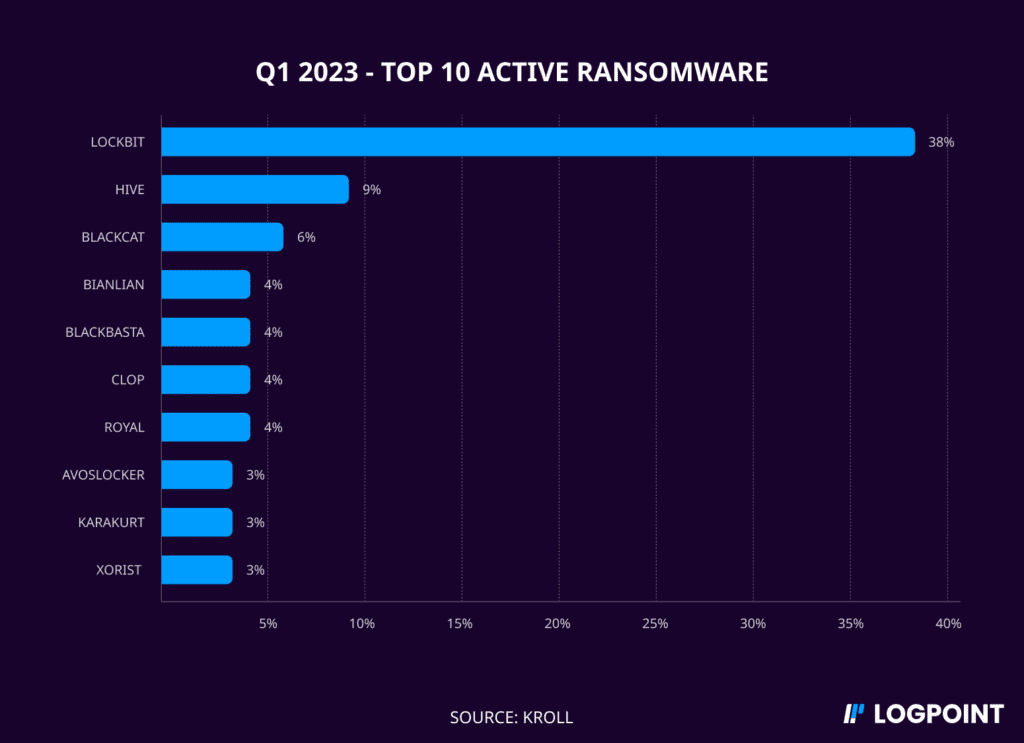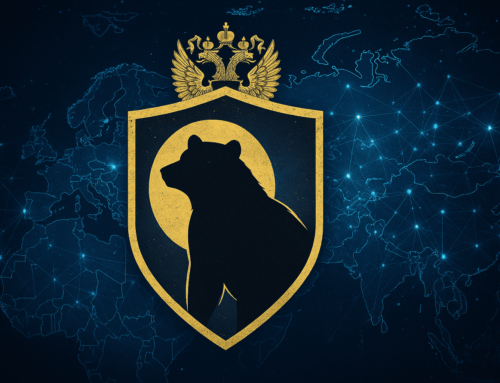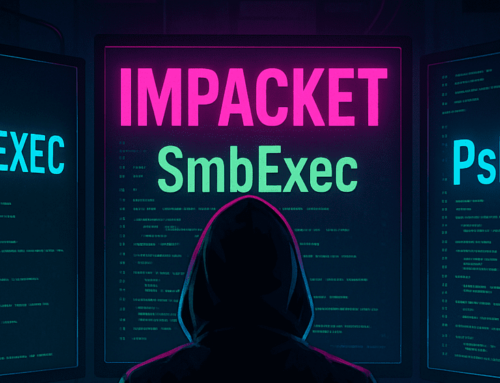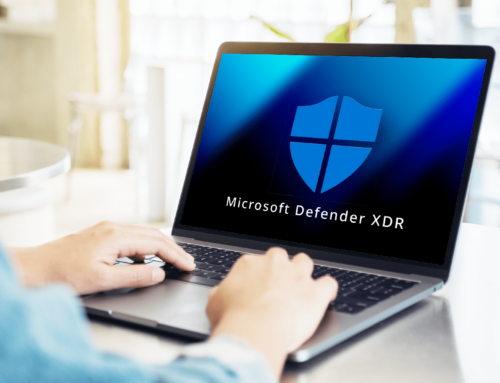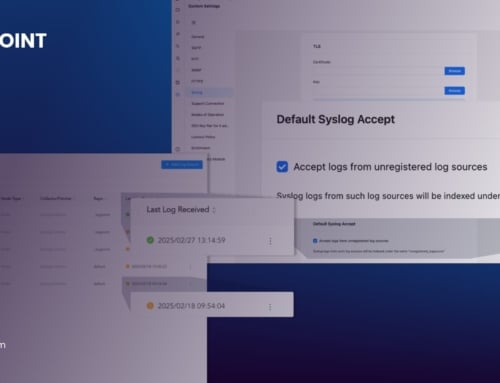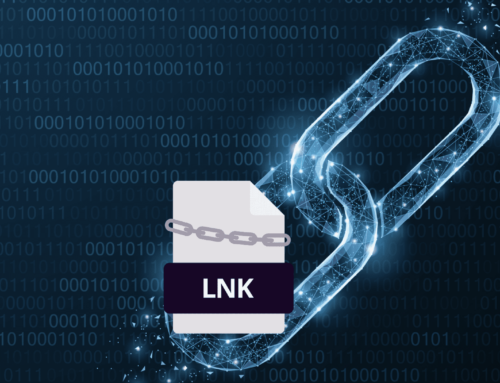In today’s ever-evolving cybersecurity landscape, organizations face a growing number of sophisticated threats. To effectively combat these threats, collaboration among cybersecurity analysts has become essential. By harnessing the power of teamwork, organizations can enhance their threat-hunting capabilities, improve detection and response times, and stay ahead of adversaries. This article explores the benefits of collaborative threat-hunting, highlights effective communication and information-sharing practices, and discusses how organizations can foster a collaborative threat-hunting culture.

Go To Section
The Benefits of Collaborative Threat Hunting
Collaboration brings numerous advantages to the threat-hunting process. By combining the expertise, perspectives, and insights of multiple analysts, organizations can achieve the following benefits:
- Improved Detection: Collaborative threat hunting allows analysts to leverage their collective knowledge, enabling the identification of subtle indicators and patterns that might be missed by individual analysts.
- Faster Response Times: Through collaboration, analysts can quickly share information, correlate data, and respond to threats in real time, minimizing the impact of an incident.
- Enhanced Knowledge Sharing: Collaborative environments foster knowledge sharing, allowing analysts to learn from each other's experiences, techniques, and best practices, leading to continuous improvement and skill development.
- Tackling Advanced Threats: Complex threats often require diverse expertise. Collaboration enables analysts with different specializations to work together, combining their skills to tackle advanced and multifaceted threats effectively.
Effective Communication and Information Sharing
Clear and efficient communication is a fundamental aspect of collaborative threat hunting. Establishing effective communication channels and information-sharing practices is crucial for successful collaboration. Key practices include:
- Defined Communication Channels: Organizations should establish dedicated communication channels, such as secure messaging platforms or incident response systems, to facilitate real-time collaboration and information exchange among analysts.
- Regular Meetings and Briefings: Conducting regular team meetings and briefings ensures that all analysts are aligned, aware of ongoing investigations, and can provide valuable input or assistance.
- Contextual Information Sharing: Analysts should share relevant contextual information about threats, attack techniques, and indicators of compromise. This allows others to understand the broader threat landscape and make informed decisions during investigations.
Fostering a Collaborative Threat-Hunting Culture
To maximize the benefits of collaboration, organizations must foster a culture that encourages and supports collaborative threat hunting. Key strategies to promote a collaborative culture include:
- Knowledge Sharing Initiatives: Encourage analysts to share their knowledge, experiences, and lessons learned through internal blogs, newsletters, or dedicated sharing sessions. This helps create a culture of openness and continuous learning.
- Trust and Respect: Foster an environment where analysts feel comfortable sharing their perspectives, asking questions, and challenging assumptions. Building trust and respect among team members is essential for effective collaboration.
- Shared Goals and Objectives: Align the goals and objectives of the threat-hunting team with the overall security strategy of the organization. This ensures that everyone is working towards a common purpose, fostering collaboration and synergy.
Leveraging Technology for Collaboration
Cybersecurity technologies play a vital role in facilitating collaborative threat hunting. All of this can help to build long-term resilience. Organizations can leverage tools such as:
- Security Information and Event Management (SIEM): SIEM platforms collect, aggregate, and correlate security data from various sources, providing analysts with a unified view of the threat landscape and enabling effective collaboration.
- Security Orchestration, Automation, and Response (SOAR): SOAR platforms automate routine tasks, streamline incident response workflows, and facilitate information sharing and collaboration among analysts.
- User and Entity Behavior Analytics (UEBA): UEBA solutions analyze user and entity behavior, helping analysts detect anomalous activities and potential insider threats. By collaborating on UEBA insights, analysts can identify and respond to threats more effectively.
- Endpoint Detection and Response (EDR) systems: EDR tools provide detailed visibility into endpoints, allowing analysts to collaborate on endpoint-related threat investigations and share insights on malicious activities.
Logpoint and Threat Hunting
Logpoint aids collaborative threat hunting by providing a range of technologies and services with capabilities that enhance the effectiveness of both SIEM and SOAR. Look no further than Logpoint Converged SIEM. In addition, Logpoint's Global Services ensures organizations can leverage their SIEM+SOAR solution to its fullest potential, enabling seamless collaboration among cybersecurity analysts. Here's a detailed section on how Logpoint aids collaborative threat hunting:
-
Logpoint Converged SIEM: SIEM fits seamlessly with SOAR, UEBA, and more in one platform. Converged SIEM helps SOC teams combine data sets from multiple sources. Instead of using multiple standalone products, they now have one single source of truth. It is the only unified platform that delivers SIEM+SOAR, UEBA, EDR capabilities and security monitoring of SAP systems for both enterprises and MSSPs.
The benefits of a converged platform include full data integration for automated TDIR, no integration or maintenance, out-of-the-box compliance support, and flexible deployment based on your needs.
-
Playbook Design Service: Logpoint's Playbook Design Service helps organizations add efficiency, precision, and automation to their incident response processes. Logpoint's team of experts works closely with organizations to refine and optimize manual incident response processes, transforming them into well-documented workflows and automated playbooks. By streamlining and automating these processes, analysts can collaborate more effectively, ensuring consistent and efficient responses to security incidents. This service reduces the workload on analysts, increases the return on investment (ROI) of security controls, and accelerates the incident response lifecycle.
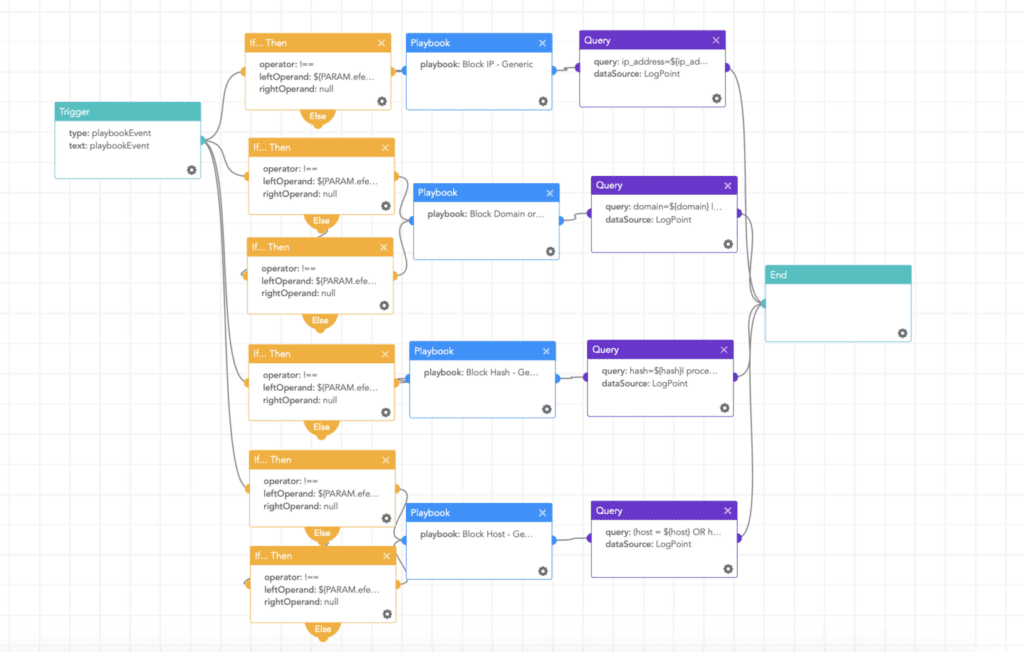
Playbook: Block Indicators
-
SOAR Kickstart Service: Logpoint's SOAR Kickstart Service provides one-on-one consultation to help organizations achieve full automation of specific use cases. The service ensures that the SOAR platform is fully functional and optimized for the organization's needs. Logpoint's experts guide organizations in configuring triggers, simplifying playbook frameworks, and automating investigation and response processes. By leveraging this service, analysts can build and develop their SOAR knowledge base, become more efficient in their collaborative threat-hunting efforts, and create their own playbooks tailored to their specific needs. The SOAR Kickstart Service accelerates the implementation process, providing automation and strategy for hunting, investigation, and response, ultimately saving time in resolving each incident.
- Emerging Threats Protection Service: Logpoint's Emerging Threats Protection Service focuses on keeping organizations up-to-date with the rapidly evolving threat landscape. Logpoint's experienced researchers and analysts continuously monitor and provide research on the newest and highest security risks such as the most prevalent ransomware groups seen in the image below.
In addition, this service delivers customized detection rules, as well as investigation and mitigation playbooks, enabling analysts to stay ahead of emerging threats. By leveraging Logpoint's expertise in threat intelligence and playbooks tailored to emerging threats, organizations can collaborate effectively to detect, respond to, and mitigate these evolving risks.
To view the latest Emerging Threats Report click HERE or head over to the blog and take a look at all of our Emerging Threats Reports.
Conclusion
Collaborative threat hunting has become an indispensable approach for organizations seeking to strengthen their cybersecurity posture. By embracing collaboration, leveraging effective communication and information-sharing practices, and adopting technologies that facilitate teamwork, organizations can harness the power of collective intelligence to detect, respond to, and mitigate advanced threats. Fostering a collaborative threat-hunting culture not only enhances an organization's security capabilities but also fosters knowledge sharing, skill development, and continuous improvement among cybersecurity analysts.
By utilizing Logpoint's Converged SIEM and utilizing Logpoint Global Services, organizations can optimize their SIEM+SOAR solution, enabling collaborative threat hunting. Logpoint's services empower analysts to streamline processes, automate workflows, and leverage tailored playbooks. This ensures that analysts can effectively communicate, share information, and collaborate on investigations and incident response, thereby enhancing the overall threat-hunting capabilities of the organization. With Logpoint's support, organizations can maximize the benefits of collaborative threat hunting in turn reducing response times, improving detection capabilities, and bolstering their security posture.


